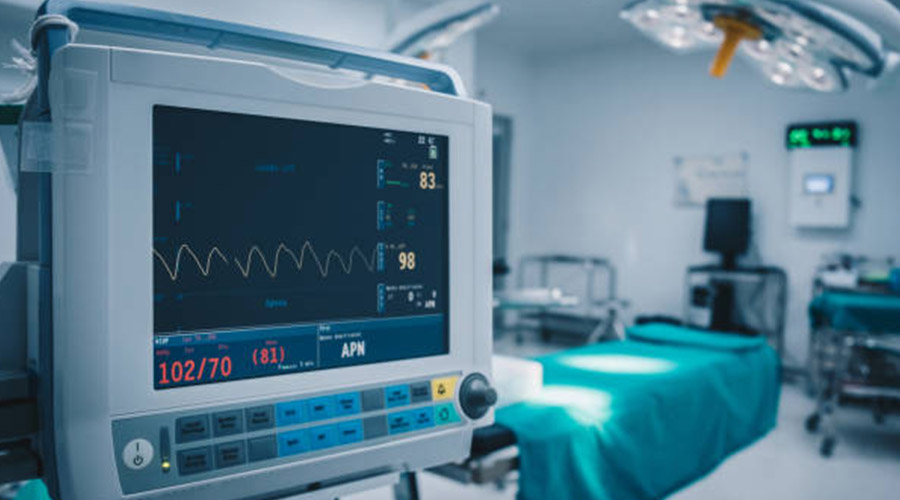When the most tragic events happen, healthcare facilities are called on to treat injured individuals and help society begin to return to normalcy. People have a life-or-death dependency upon healthcare facilities being fully functional and capable of treating any needs that arise.
Now imagine a healthcare facility that is without the electrical power necessary to perform the medical procedures and use critical equipment that, for example, provides ventilation and oxygen to patients. The ensuing chaos and potential lives lost is immeasurable. The potential consequences of the loss of electrical power highlight the crucial need for healthcare facilities managers to make the safety of electrical systems and equipment a high priority.
Ensuring healthcare facilities meet and continuously use the most current codes and standards can help to establish a holistic level of electrical safety in the building. Incorporating the National Fire Protection Association (NFPA) electrical cycle of safety (ECoS) into healthcare facility design, installation and maintenance helps mitigate unnecessary risk. The ECoS is comprised of three NFPA documents to establish and maintain electrical safety: NFPA 70, National Electrical Code (NEC); NFPA 70B, Standard for Electrical Equipment Maintenance; and NFPA 70E, Standard for Electrical Safety in the Workplace.
NFPA 70
Commonly referred to as the NEC, NFPA 70 is the foundational piece in establishing a safe electrical system in a facility. Whether the application is an initial electrical installation for a new building, an addition to an existing building or new equipment being installed in a building, the NEC provides the requirements in establishing a safe and functional installation.
NFPA 99, Health Care Facilities Code, also contains electrical requirements and is regularly used in healthcare facilities. It requires establishing an essential electrical system in three separate branches: life safety, critical and equipment.
NFPA 99 also requires that the installation be performed according to the NEC, which provides the requirements for safe installations of the essential electrical system in Article 517. Some healthcare facilities choose to use NFPA 99 on their own, but many are also bound to using it to receive compensation for services rendered under Medicare and Medicaid programs, which are managed by the Centers for Medicare and Medicaid Services (CMS). The close tie between NFPA 99 being used and its requiring use of the NEC to comply further emphasizes the need to ensure that NEC requirements are used as the basis of the healthcare facility’s electrical system installations and the foundation for electrical safety.
Even the safest of electrical system installations can become dangerous and unreliable when they are not properly maintained. After the initial installation, electrical equipment and systems must receive continual servicing as needed to ensure everything remains safe, functional and reliable.
Especially in healthcare applications, the failure of electrical equipment and systems can create significant issues with performing in-progress patient medical procedures, leading to potential loss of life. With no room for error, it is critical that healthcare facilities’ electrical equipment and systems are properly maintained.
NFPA 70B
NFPA 70B, Standard for Electrical Equipment Maintenance, helps facilities managers establish an electrical maintenance program. Used with manufacturers’ maintenance instructions where provided, a program developed in accordance with NFPA 70B establishes additional electrical equipment and system maintenance procedures designed to keep electrical equipment and systems safer, mitigating the risk of failure, breakdown and malfunction.
Proper use of a program also helps establish a condition of maintenance of electrical equipment, which is a requirement of NFPA 70E to be considered when evaluating the level of risk employees are exposed to when performing electrical work.
NFPA 70E
Inherent risk is understood for those who work on electrical equipment and systems, based on the close interaction with electricity. But the level of risk exposure can be better managed by closely following the safe work practices used in NFPA 70E. Employers are responsible for establishing and implementing a documented electrical safety program that establishes the procedures for employees to follow to mitigate the risk they face while performing their work.
NFPA 70E specifically states that the program must include elements that consider the condition of maintenance of electrical equipment and systems. As previously noted, NFPA 70B helps establish that condition of maintenance. Therein lies the tie to NFPA 70E and NFPA 70B. The program developed in NFPA 70E to help keep employees safe while performing their work must consider the condition of maintenance that can be established by using the electrical maintenance program designed per NFPA 70B.
Based on the Occupational Safety and Health Act of 1970 (OSHA), Section 5(a)(1) — also known as the general duty clause — healthcare facilities also must provide a safe workplace for their employees. This requirement includes ensuring electrical equipment is maintained according to OSHA requirements or face possible financial citations.
Electrical safety should be no accident, especially in facilities that assist others when an accident takes place. When used collectively, the NFPA’s ECoS allows healthcare facilities managers to ensure a safe electrical installation and reliably maintained equipment and electrical systems while ensuring the safety of the individuals that work on or with the equipment. When lives are at risk, there is no room for error.
By incorporating the ECoS, managers can keep their facilities ready when called on by continually ensuring the safety and functionality of their electrical equipment and systems.
Corey Hannahs is senior electrical content specialist with the National Fire Protection Association.

 Contaminants Under Foot: A Closer Look at Patient Room Floors
Contaminants Under Foot: A Closer Look at Patient Room Floors Power Outages Largely Driven by Extreme Weather Events
Power Outages Largely Driven by Extreme Weather Events Nemours Children's Health Opens New Moseley Foundation Institute Hospital
Nemours Children's Health Opens New Moseley Foundation Institute Hospital Code Compliance Isn't Enough for Healthcare Resilience
Code Compliance Isn't Enough for Healthcare Resilience Ribbon Cutting Marks First Phase Completion for New Montefiore Einstein Facility
Ribbon Cutting Marks First Phase Completion for New Montefiore Einstein Facility